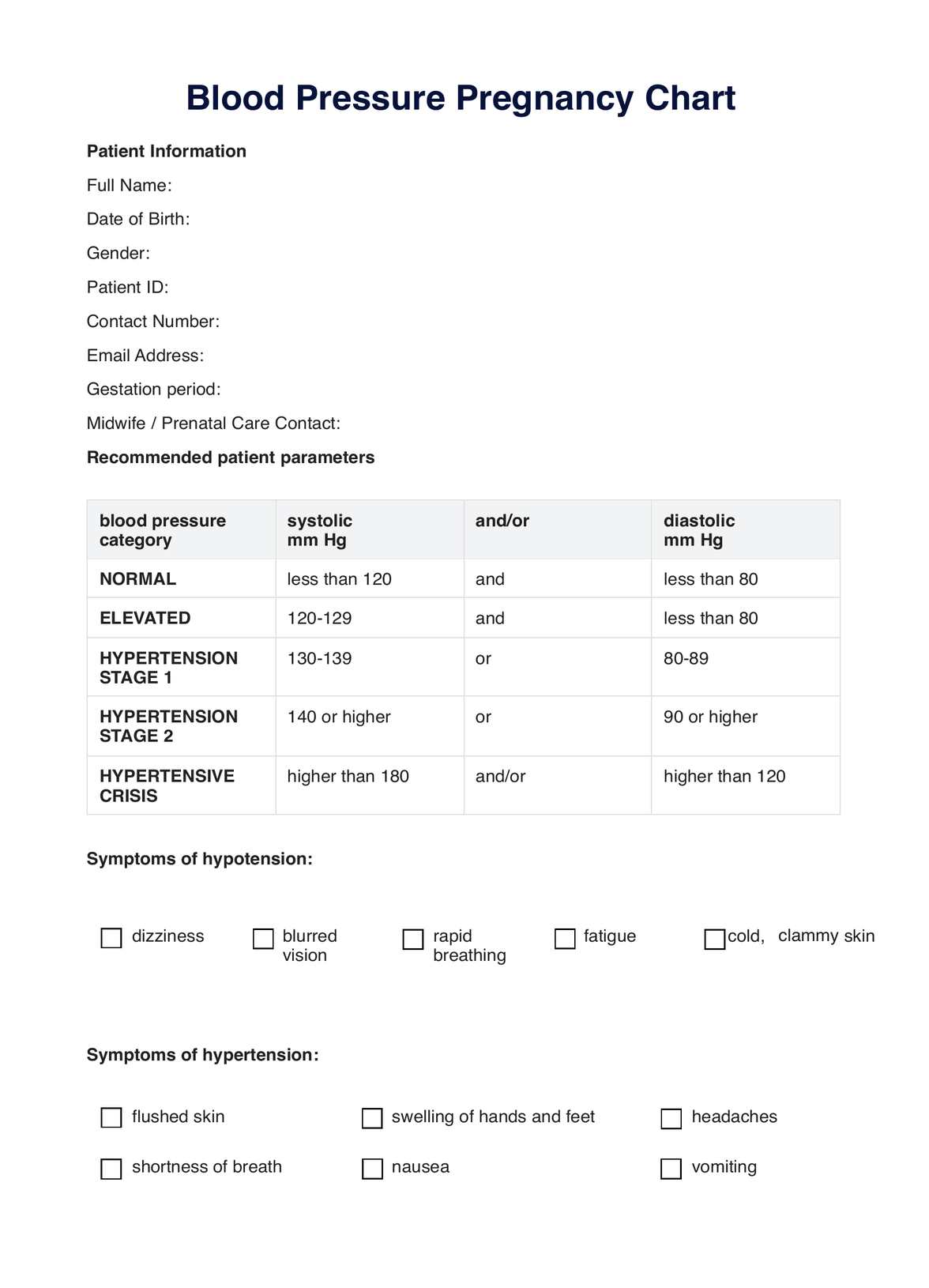Healthcare professionals, such as physicians and midwives, often request blood pressure charts to help manage and monitor the risks associated with high blood pressure in pregnant patients.

Blood Pressure Pregnancy Chart
Pregnancy and blood pressure levels are crucial to the health and well-being of both mother and child. Utilize this informative guide and easy-to-use template to mitigate the risks.
Blood Pressure Pregnancy Chart Template
Commonly asked questions
Blood pressure pregnancy charts are used in various contexts to monitor and assess blood pressure levels during gestation. Both practitioner and patient can utilize blood pressure charts should regular levels need to be taken.
Blood pressure charts are used as visual tools to track and interpret blood pressure readings over time gathered through a sphygmomanometer or automated blood pressure monitor. In pregnancy, they help determine the risks of serious conditions like preeclampsia occurring.
EHR and practice management software
Get started for free
*No credit card required
Free
$0/usd
Unlimited clients
Telehealth
1GB of storage
Client portal text
Automated billing and online payments











